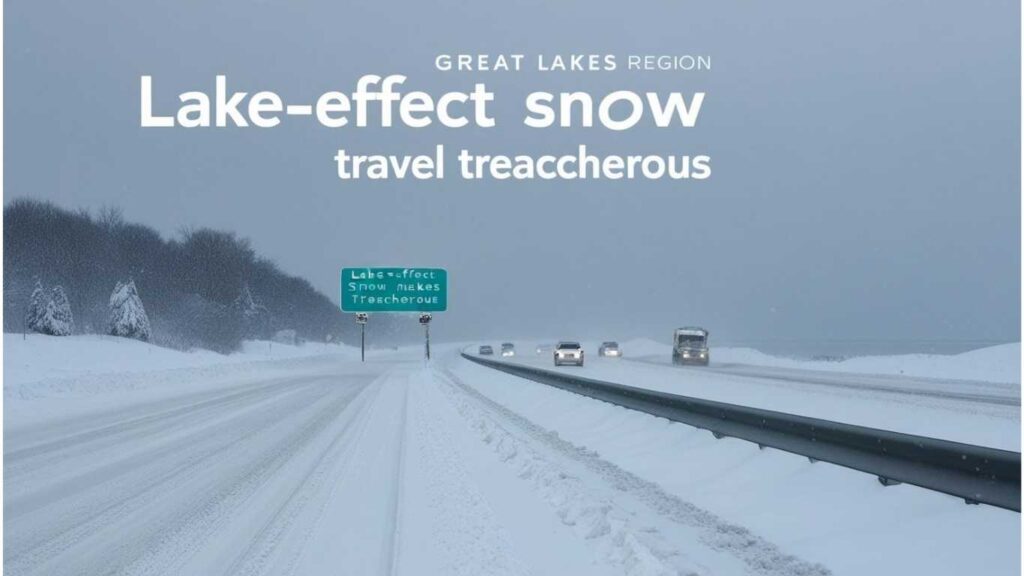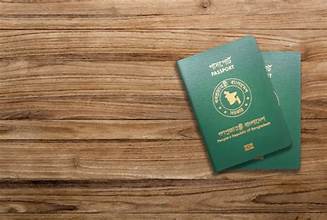Summary:
During winter Lake-effect snow in the Great Lakes region poses dangers to travelers because it brings unsafe driving conditions as well as delayed flights and deep snow layers. When cold air travels over warmer Great Lakes waters it produces localized snow accumulation that is notably heavy. The most dangerous effects from these snowstorms occur downstream of the lakes which cause roads to become dangerous and disrupts travel. Learning about how lake-effect snow forms and developing suitable preparations helps people avoid winter dangers during snowstorms.

Contents
Lake-Effect Snow Across the Great Lakes Region Makes Travel Treacherous
The Great Lakes region experiences a strong and distinctive weather occurrence known as lake-effect snow which takes place during winter months. The United States observes its most damaging winter conditions through this specific form of snow accumulation. Lake-effect snow sequence throughout the Great Lakes region leads to dangerous travel conditions and triggers frequent road blockages and aircraft cancellations and multiple accidents. The harsh winter climate affects major cities including Buffalo and Cleveland together with Chicago which creates severe complications for local residents trying to travel during this time.
What is Lake-Effect Snow?
A mass of Arctic air passes over Great Lakes waters which are warmer than the surrounding environment and triggers Lake-effect snow formation. Evaporation of lake water from the cold air temperature generates snow clouds in the atmosphere. The clouds discharge powerful snow accumulation when drifting above land territories in specific tight but weighty bands. Some parts of the region collect multiple feet of snow but neighboring locations stay clear of snowfall completely.
Why Lake-Effect Snow Across the Great Lakes Region Makes Travel Treacherous
1. Reduced Visibility and Whiteout Conditions
The deadliest characteristic of Great Lakes region lake-effect snow exists in its rapid and powerful snow accumulation rates. Whiteouts develop in under ten minutes thus creating almost complete blindness from reduced visibility which makes driving unsafe. Motorists encounter limited visibility that extends just beyond their front bumper causing risks for multiple car crashes.
2. Rapid Snow Accumulation
Snow accumulation from lake-effect phenomena reaches dangerous levels by exceeding the rate of three inches per hour. The excessive snow accumulation exceeds the capacity of road crews while challenging their plowing operations. Travel disruptions become severe because roads become completely blocked by snowfall making roads impassable.
3. Ice-Covered Roads
Snow accumulations trigger small surface melting below traffic weight followed by freezing to form hazardous ice. The hazardous mixture of snow and ice creates dangerous conditions which substantially heightens risks of vehicle skids leading to accidents.
4. Air Travel Disruptions
The Great Lakes region faces extensive airborne flight delays and cancellations because of lake-effect snow at local airports. Massive snowstorms along with foggy conditions compromise the safety of plane operations during takeoff and landing procedures. Lake-effect snowstorms frequently cause substantial travel problems for airplane passengers entering or departing from Detroit, Milwaukee and Syracuse.
5. Stranded Travelers and Emergency Situations
Travelers along the Great Lakes shoreline do not correctly understand the power of lake-effect snow so they become trapped in their vehicles during unsafe circumstances. The path of emergency responders to people in need becomes blocked by excessive snow together with icy surfaces during storm events. Lake-effect events make winter travel throughout the region more dangerous because of difficulty reaching stranded travelers.
Cities Most Affected by Lake-Effect Snow
The Great Lakes create especially high vulnerability to lake-effect snow in specific townships and cities located downwind. Multiple regions stand out as the areas most frequently affected by lake-effect snowfall.
- Buffalo, New York – Known for record-breaking snowfall and blizzards.
- Lake Erie snow falls heavily upon Erie Pennsylvania because the region lies directly across Lake Erie.
- Cleveland in Ohio falls victim to lake-effect snow storms that result in hazardous driving problems.
- Syracuse occupies a spot among the snowiest metropolitan areas in America because of Lake Ontario storms.
- The heavy snowfall from Lake Michigan in Grand Rapids Michigan causes difficult travel conditions.
Proper Safety Procedures for Lake-Effect Snow Conditions
Since lake-effect snow across the Great Lakes region makes travel treacherous, it’s essential to take precautions when venturing out during winter storms. Here are some key safety tips:
1. Check Weather Forecasts Regularly
You need to monitor all lake-effect snow alerts and warnings in your area. The experts at meteorology rely on radar system data along with weather predictions to determine formation areas of intense snow bands.
2. Avoid Unnecessary Travel
People should keep their vehicles off the roads during predicted serious snow conditions except when it is critical to drive. Delay your trips because it lowers the chances of experiencing dangerous vehicle accidents.
3. Winterize Your Vehicle by Adding Necessary Equipment for Hard Weather Conditions
- Place winter tires on your car since they enhance traction.
- Your car emergency kit must contain a flashlight and food supplies together with water and blankets.
- Store a shovel and ice scraper inside your vehicle since they will help you navigate through stuck scenarios.
4. Drive Cautiously and Slowly
Reduction of both speed and increased distance between vehicles must occur whenever you do travel. You must expect both sudden snowblind conditions and blocked roads.
5. Prepare for Power Outages
Power lines experience damage and result in outages as a result of Lake-effect snow conditions. A backup heat source consisting of both generator and fireplace should be ready to use in case power loss occurs.
Final Thoughts
WERI affects the Great Lakes region through lake effect snow which produces dangerous conditions that challenge drivers together with those who fly by air. The risks from lake-effect snow can be reduced through proper scientific knowledge about this phenomenon coupled with safety awareness of affected zones. Residents together with visitors need to stay updated about lake-effect snow conditions while keeping themselves prepared to handle the winter storm’s challenges. Safety on roads depends heavily on your attention during winter since you live in the area or you plan to visit in the coming months.

Safnaa has been working in the travel industry for over a decade, and her expertise and knowledge are reflected in the high-quality content and resources available on travelstutor.com. She is dedicated to providing travelers with accurate and up-to-date information on destinations, accommodations, transportation, and activities, ensuring that they have the best possible travel experience.




